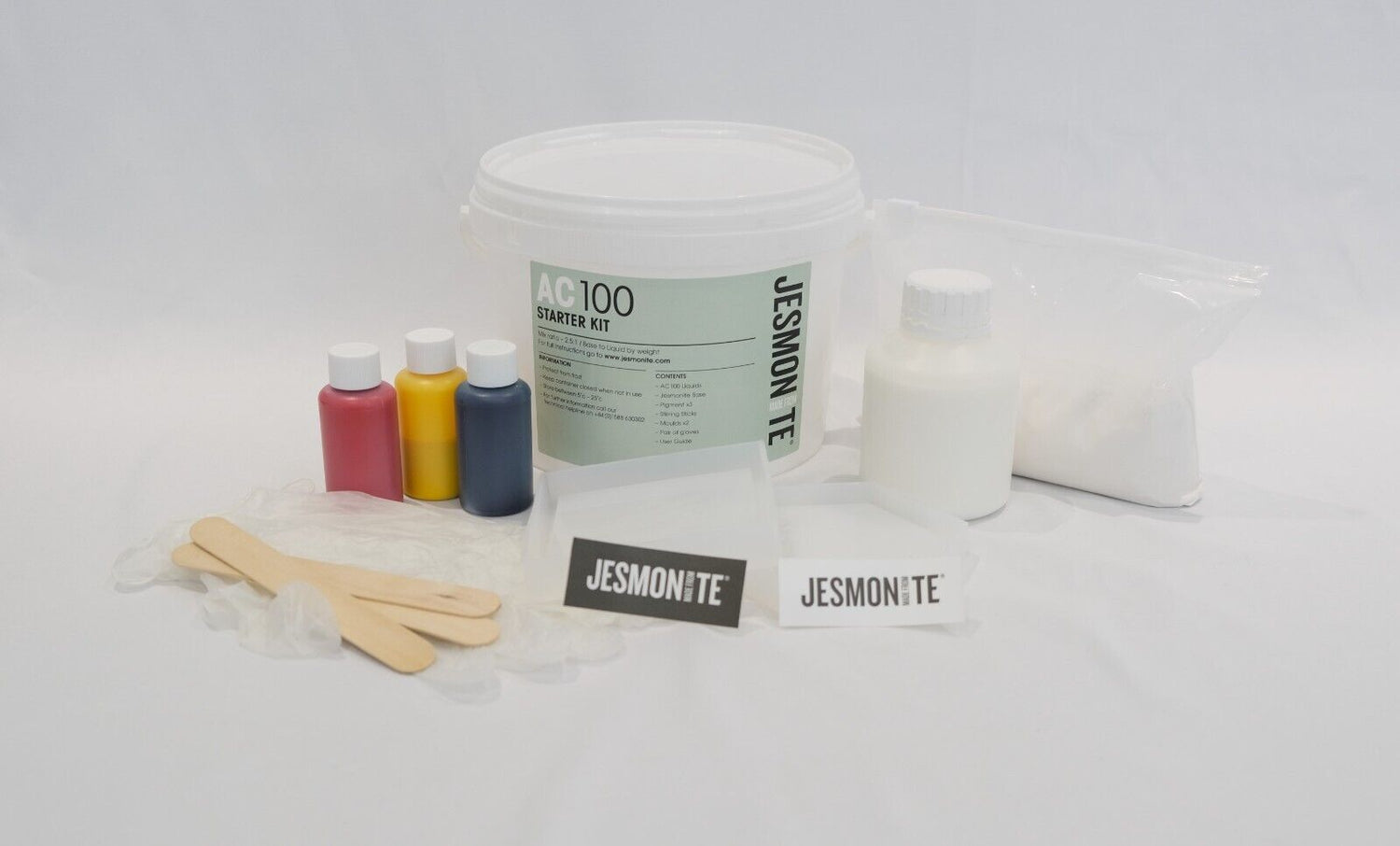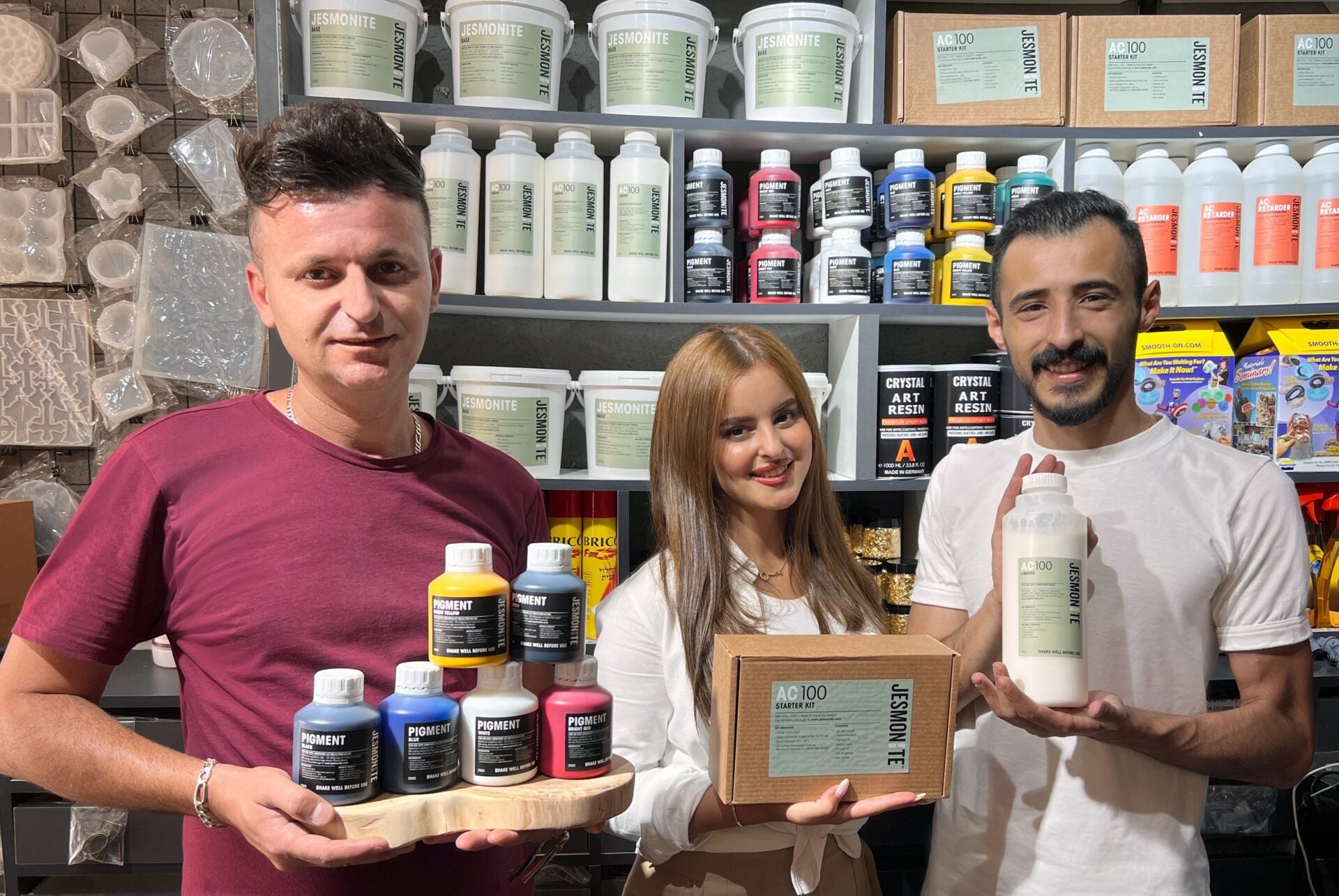You may have heard about jesmonite and how great it is to use, or maybe you haven't heard of it before and want to compare it to other materials on the market.
We have compiled a small comparison guide below to help you understand how jesmonite differs from other similar materials on the market.
Let's start by understanding what jesmonite material is…
From building decorative structures to home decor, jesmonite has quickly become the preferred material for artists, craftsmen, and makers worldwide.
The two-part system includes metallic Powder and acrylic resin liquid. They are mixed together and then poured into a Mold.
Jesmonite is one of the most environmentally conscious options when it comes to resin and epoxies as it contains no solvents or volatile organic compounds (VOCs). The final result is a finished piece that looks like smooth stone.
Lightweight, durable, and can be customized using decoration, pigments, metallic effects, and techniques like terrazzo. Jesmonite AC100 and AC300 creations are usually ready to be demolded within just 15-30 minutes, making the casting process quick and enjoyable!
The difference between jesmonite and epoxy resin
Like jesmonite to a large extent, the popularity of epoxy resin has grown over the past few years worldwide and in Palestine.
The positive side of resin is that it gives a more transparent effect than jesmonite; you can add colors to resin in the form of dyes and mica Powder and make transparent and shiny pieces.
While working with jesmonite does not produce transparent pieces but colored ones according to your choice (the base color of jesmonite material is white).
The downside of resin is that it may take 24 hours to cure compared to Jesmonite AC100 and AC300, which take 15-30 minutes for full curing.
This makes the working time with resin much longer than jesmonite, which is something to consider if you plan to sell finished pieces (trays, coasters, etc.)
Another consideration in the comparison is the environmentally friendly composition of jesmonite materials, as all its products are solvent-free and contain no volatile organic compounds, making it the best environmental choice.
The difference between jesmonite and cement
Think of jesmonite as cement but more creative.
However, when we think of cement, we might think of a gray sidewalk or a worn-out road. Of course, you can be creative with cement, but jesmonite is much easier to work with and much better at achieving vibrant pieces and colors you cannot achieve with cement. Also, jesmonite AC100 (for creative artworks) is a strong, lightweight product and friendly to silicone molds compared to cement.
Cement was made for outdoor works that will bear heavy weights using it, and we liken it to jesmonite AC730, and even in this comparison, the AC730 product is lighter, waterproof, and does not deteriorate over time like cement.
Even using fast-drying cement, the curing time for cement is still 24 hours. This is much longer than 15-30 minutes compared to AC100 and AC300.
Also, jesmonite is easier to carve and sand compared to cement of all kinds.
Cement is not ideal if you are impatient like us and looking for stunning pieces!
The difference between jesmonite, Turkish Powder, and gypsum
Gypsum and Turkish Powder are the closest alternatives to Jesmonite AC100, AC200, and AC300 as each of these systems relies on gypsum like jesmonite, and they require a slightly longer curing time, taking 40 to 55 minutes to harden.
But unlike jesmonite, gypsum and Turkish Powder are very fragile and can crack easily, and the final product is not as strong as jesmonite.
There are also no types of water-resistant gypsum, while jesmonite comes with water-resistant and external factor options to give you a wider range of casting options such as outdoor plant pots, dishes, coasters, trays, and others.
Summary
The best and most effective materials for use in artworks and crafts are jesmonite and epoxy resin, where resin is more effective for transparent works, and jesmonite is more effective for colored works, terrazzo techniques, and projects we want to complete as quickly as possible.
We hope we have helped shed some light on how Jesmonite compares to other materials you may have seen or heard about, but if you have any other questions, leave them in the comments below.



6 comments
منة
من اين يمكنني الحصول على قوالب على شكل اصص ؟
Leave a comment
This site is protected by hCaptcha and the hCaptcha Privacy Policy and Terms of Service apply.